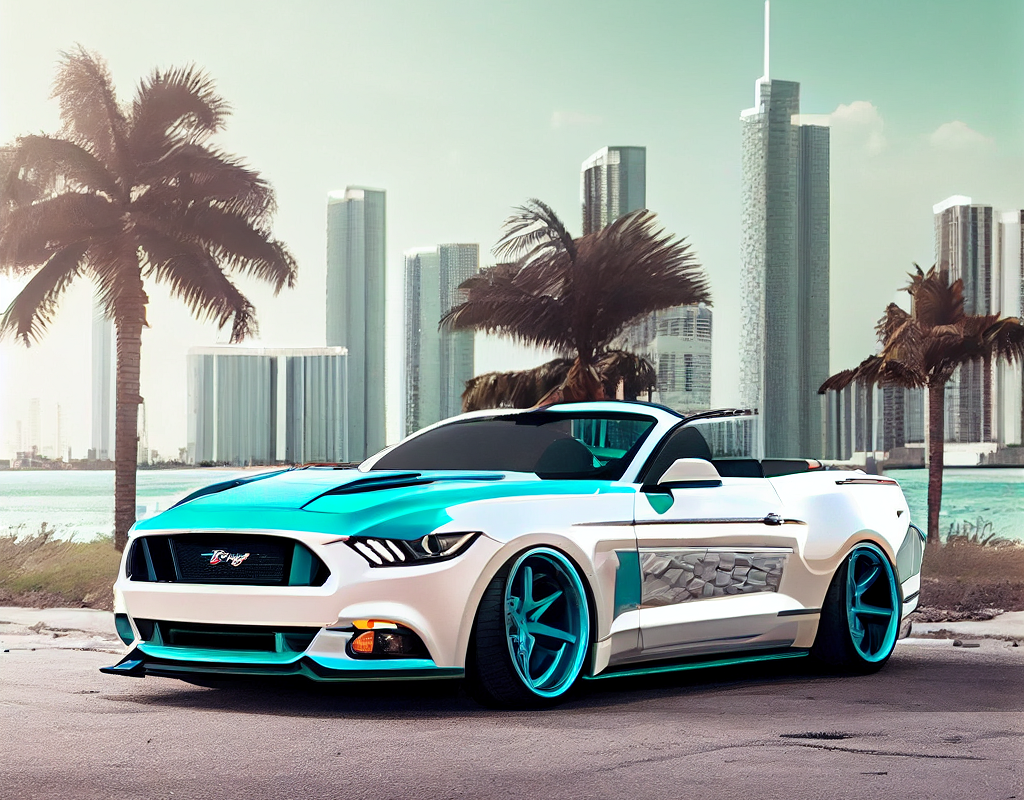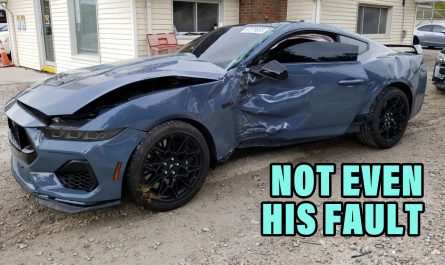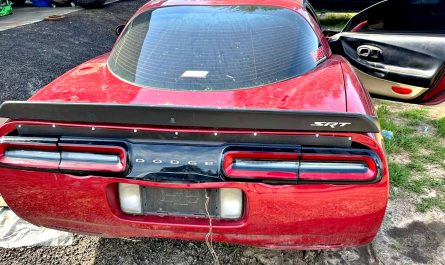Revive your vintage muscle car with our comprehensive guide to muscle car restoration. Unlock the beauty of your classic ride today!
Muscle Car Restoration: A Comprehensive Guide
If you own a classic, vintage muscle car, you may have considered embarking on the journey of muscle car restoration. Restoring a muscle car to its former glory can be a rewarding and fulfilling experience. However, it requires careful planning, research, and a love for these timeless vehicles. In this comprehensive guide, we’ll explore the essential steps and considerations involved in muscle car restoration.
Winterizing Your Classic Car
Before diving into the restoration process, it’s important to ensure that your classic car is protected during the winter season. Winterizing your vehicle involves taking necessary precautions to shield it from the harsh conditions, such as cold temperatures and road salt. This includes storing the car in a dry, well-ventilated space, adding fuel stabilizers to prevent fuel degradation, and protecting the exterior with a quality cover. For a detailed guide on winterizing your classic car, check out our article on winterizing your classic car.
Choosing the Right Muscle Car for Restoration
When it comes to muscle car restoration, selecting the right vehicle is crucial. Restoring a car without passion can be a daunting task, so it’s important to choose a vintage muscle car that you truly love. Starting with a car that you find appealing and that is in the best possible condition will make the restoration process more enjoyable and rewarding. Avoid cars with excessive rust, missing parts, collision damage, or extreme wear and tear, as these issues can significantly increase the cost and time involved in the restoration process. For a wide selection of muscle cars available for restoration, visit our page on muscle cars for sale.
By taking the time to properly winterize your classic car and choosing the right vehicle for restoration, you’re setting a solid foundation for a successful muscle car restoration project. Remember, restoration requires careful planning, research, and a clear understanding of the process. Stay tuned for the next sections in this guide, where we’ll delve into the step-by-step process of muscle car restoration and explore the essential tools and equipment needed for the job.
The Muscle Cars Ideal for Restoration
When it comes to muscle car restoration, choosing the right car to restore is crucial for a successful and satisfying project. While there are numerous classic muscle cars to consider, two iconic models stand out as popular choices among enthusiasts: the Pontiac GTO and the Chevrolet Chevelle.
Pontiac GTO: A Classic Muscle Car
The Pontiac GTO, produced from 1964 to 1972, is often regarded as one of the pioneers of muscle cars. With its powerful V8 engine, stylish design, and impressive performance, the GTO captivated car enthusiasts then and continues to do so today. The GTO’s 325 horsepower V8 engine combined with its sporty look make it an excellent choice for a restoration project. Moreover, relatively easy-to-find parts are available for this classic muscle car, simplifying the restoration process (JEGS).
Chevrolet Chevelle: The Iconic Intermediate Muscle Car
Another highly regarded muscle car for restoration is the Chevrolet Chevelle, particularly the model years 1970 to 1972. The Chevelle served as an intermediate-sized option between the larger Impala and the compact Chevy Nova. Its sleek design and performance capabilities made it a favorite among car enthusiasts during the muscle car era. The 1970 model year, in particular, featured racing stripes that further enhanced its classic muscle car aesthetics. Restoring a Chevrolet Chevelle allows you to experience the thrill of driving an iconic piece of automotive history (JEGS).
When embarking on a muscle car restoration project, it’s essential to choose a car that you are passionate about. Restoring an old American muscle car without passion can be a challenging endeavor (Classic Industries). Before starting, it’s advisable to inspect and test drive the car or a similar example to understand its performance, comfort, and any potential issues. This evaluation will help you determine if the chosen car is the right fit for your restoration goals (Classic Motorsports).
By selecting a Pontiac GTO or Chevrolet Chevelle for restoration, you can dive into the world of classic muscle cars and unlock the beauty of these exceptional vehicles. Remember to thoroughly research and plan your restoration project, ensuring you have the necessary resources, time, and skills to bring these vintage muscle cars back to their former glory.
The Step-by-Step Process of Muscle Car Restoration
Restoring a vintage muscle car requires a systematic approach to ensure a successful outcome. The step-by-step process of muscle car restoration involves disassembly, repairing or replacing components, bodywork, and reassembling the car.
Disassembly: Taking Apart the Car
The first step in muscle car restoration is disassembling the vehicle. This involves carefully removing all parts of the car, including the engine, transmission, interior components, and other mechanical parts (Wrecktify Collision). It is crucial to document and label each part to facilitate reassembly later.
Repairing or Replacing Components
Once the car is disassembled, the next step is to assess and repair or replace any damaged or worn-out components. This stage is crucial for ensuring the car is in top condition. Depending on the condition of the original parts, you may need to repair them or opt for replacements. It’s important to source high-quality parts that are suitable for your specific make and model of muscle car (Wrecktify Collision).
Bodywork: Restoring the Car’s Exterior
Bodywork is an essential aspect of muscle car restoration. During this stage, the focus is on repairing or replacing any damaged or rusted body panels. This process helps to achieve a smooth and clean exterior appearance, bringing the car back to its original glory. Professional bodywork may involve removing dents, smoothing imperfections, and applying primer and paint to achieve a flawless finish. It’s crucial to choose experienced professionals or develop your skills with proper guidance to ensure the best results (Wrecktify Collision).
Reassembling the Car: Putting it All Together
The final stage of muscle car restoration is reassembling the car. This is the exciting part where all the repaired or replaced components are carefully put back together to complete the restoration process. Ensure that you refer to the documentation and labels made during the disassembly stage to correctly fit each part back in its place. Take your time and pay attention to detail to ensure everything aligns properly and functions as intended. Reassembling the car is a milestone in the restoration process and brings you one step closer to witnessing the transformation of your vintage muscle car.
By following these step-by-step processes of muscle car restoration, you can bring your classic car back to life. Remember, restoration can be as challenging or as manageable as you make it, depending on your experience and the work you plan to do (Dean’s Auto Glass). Take pride in the journey and enjoy the rewarding experience of reviving a piece of automotive history.
Essential Tools and Equipment for Muscle Car Restoration
When it comes to muscle car restoration, having the right tools and equipment is essential to ensure a smooth and successful project. Here are some key tools and equipment you’ll need for your restoration journey:
Impact Wrench: Bolt and Lug Nut Removal
An impact wrench plays a crucial role in muscle car restoration, as it allows for efficient removal of bolts and lug nuts. This powerful tool saves you time and effort compared to using manual wrenches. It’s a must-have in your toolkit, making the disassembly process much more manageable. Find the right impact wrench for your restoration needs to ensure a secure and accurate removal of fasteners.
Air Compressor: Powering Various Tools
An air compressor is an indispensable item in car restoration projects, as it powers a wide range of tools. From hammers to impact wrenches, grinders to spray guns for auto painting, an air compressor provides the necessary air pressure to operate these tools effectively. Consider the size and capacity of the air compressor based on your specific needs and the tools you’ll be using.
Grinder: Cutting Metal and Buffing
A grinder is a versatile tool that is highly beneficial during the later stages of your muscle car restoration project. It can be used for cutting metal, removing rust, and buffing the edges of your car’s exterior. With the appropriate attachments, a grinder allows you to shape and smooth various parts of the car, bringing it closer to its original glory.
Floor Jack: Lifting the Car
A reliable floor jack is a must-have tool for any muscle car restoration project. It enables you to lift the car off the ground, providing access to the underside for repairs and component replacements. Look for a floor jack with a sufficient lift height and weight capacity to handle the specific requirements of your car. Safety is paramount, so always use a jack stand to support the car once it is lifted.
MIG Welder: Repairing and Joining Metal Parts
An MIG welder is an essential tool for repairing and joining metal parts during muscle car restoration. It allows you to fuse metal pieces together, restoring structural integrity and ensuring that the car retains its original strength. Look for an MIG welder with appropriate settings, a gas bottle, and a manual control valve for ease of use and precise welding.
By equipping yourself with these essential tools and equipment, you’ll be well-prepared to tackle your muscle car restoration project. Remember to invest in quality tools and prioritize safety throughout the process. Properly maintained and utilized tools will help you achieve outstanding results and bring your vintage muscle car back to its former glory.
For more information on finding the right muscle car for restoration and comprehensive guides on the restoration process, be sure to explore our articles on muscle car for sale, classic muscle car, american muscle car, and vintage muscle car.
Common Mistakes to Avoid in Muscle Car Restoration
Restoring a classic muscle car is an exciting and rewarding endeavor, but it’s essential to approach the restoration process with careful planning and attention to detail. To help you avoid common pitfalls, here are some key mistakes to avoid during your muscle car restoration journey.
Choosing the Right Car for Restoration
Starting with the right car is crucial for a successful restoration project. It’s best to search for the nicest example of the vintage muscle car you want to restore. A car with extensive rust, missing parts, collision damage, or extreme wear and tear can significantly increase the cost and time of the restoration process. Prioritize finding a solid foundation to work with.
Test Drive and Thorough Inspection
Before diving into a restoration project, it’s important to thoroughly inspect and test drive the car or a similar model. This allows you to understand its performance, comfort, and identify any potential issues. By experiencing the car firsthand, you can determine if you truly enjoy driving it and if any adjustments or modifications need to be made during the restoration process.
Continuous Learning and Seeking Help
Restoring a muscle car requires a combination of skills, knowledge, and experience. It’s crucial to continuously learn and educate yourself throughout the restoration process. Take advantage of resources such as online forums, books, and workshops to expand your understanding of the restoration techniques and best practices. Don’t hesitate to seek help from experienced professionals or fellow enthusiasts when you encounter challenges or need guidance.
Hiring Professionals and Checking References
While many enthusiasts enjoy tackling the restoration process themselves, there may be certain aspects of the project that require professional expertise. It’s important to thoroughly research and vet any professionals or subcontractors you plan to hire. Checking references and asking past customers about the quality of work, adherence to budgets, and meeting deadlines will help ensure that your restoration project is in capable hands.
By avoiding these common mistakes and following a well-planned restoration approach, you can increase the chances of a successful and satisfying muscle car restoration. Remember to create a detailed plan, document the process with photos and videos, and invest in high-quality parts and materials to achieve the best results.
Essential Tips for Successful Muscle Car Restoration
Restoring a classic muscle car can be an exciting and rewarding endeavor. However, it requires careful planning, research, and a well-executed plan to achieve the desired results. Whether you’re a seasoned car enthusiast or new to the world of restoration, these essential tips will help guide you through the process and avoid common mistakes.
1. Create a Detailed Plan
Before diving into the restoration process, take the time to create a detailed plan. This plan should include a clear vision of your desired outcome, a budget, a timeline, and a list of necessary tasks. Consider the extent of the restoration you want to undertake and decide whether you’ll be doing all the work yourself or sourcing professionals for specific tasks. A well-thought-out plan will serve as a roadmap throughout the restoration journey, ensuring that you stay on track and achieve your goals. For additional guidance, check out our comprehensive guide on muscle car restoration.
2. Start with the Right Car
Choosing the right car for restoration is crucial to the success of your project. Look for a car in the best possible condition, as rust, missing parts, collision damage, or extreme wear and tear can significantly increase the cost and time of the restoration process. Take the time to thoroughly inspect and test drive the car or a similar example before starting the restoration. This will help you understand its performance, comfort, and any potential issues that may arise during the restoration process.
3. Document and Organize
Throughout the restoration process, document and organize everything. Take pictures and video recordings before, during, and after the disassembly phase. This will help you remember how everything came apart and serve as a reference during reassembly. Create a checklist of parts and take note of what needs replacing, repairing, or repainting. Proper documentation and organization will save you time and frustration as you progress through the restoration process.
4. Invest in Quality Parts and Materials
To achieve the best results, it’s important not to skimp on the quality of parts and materials. While it may be tempting to cut costs, using substandard parts or materials can lead to the need for redoing work or additional expenses in the future. Invest in proper bodywork, paint, and engine components to ensure a long-lasting and high-quality restoration.
5. Continuous Learning and Seeking Help
Restoring a muscle car is a continuous learning process. Stay open to learning new techniques, researching best practices, and seeking advice from professionals and fellow enthusiasts. Joining online forums, attending car shows, and participating in local car clubs can provide valuable insights and support throughout your restoration journey.
6. Check References and Hire Professionals
If you decide to enlist the help of professionals for certain aspects of the restoration, it’s essential to check their references. Ask past customers about the quality of work, adherence to budget, and meeting deadlines. This will help ensure that your restoration project is in capable hands and that you achieve the desired outcome (Classic Motorsports).
By following these essential tips, you can embark on your muscle car restoration journey with confidence. Remember to plan meticulously, choose the right car, document your progress, invest in quality parts, continuously learn, and seek professional assistance when needed. With dedication and attention to detail, you’ll be able to unlock the beauty and transform your vintage muscle car into a stunning piece of automotive history.







